Planning Your Programme
Whether you're organising a conference, festival, or corporate gathering, a thoughtfully crafted programme ensures participants have a valuable and memorable experience.
The types of entertainment, activities, and other event features you provide for attendees, as well as the way they are scheduled and communicated, influences your attendees’ experience. These factors can also affect ticket sales and public perception of your event.
Tips:
Elements of an effective programme
- Alignment with your event’s purpose, identity, and target audience.
- Options to satisfy the needs and interests of all attendees.
- Clearly communicated scheduling information.
- No timing or location clashes between features that cater to the same audience segments.
Choosing your entertainment and activities
Choosing the right entertainment and activities is crucial to the success of your event, as these factors significantly impact attendee engagement and overall experience. Consider aspects such as:
- Audience preferences and demographics
- Think about the age, cultural background, interests, and professional backgrounds of your attendees.
- Review feedback from past events and current trends to identify popular and engaging entertainment options.
- Ensure that your choices are inclusive and accessible to all attendees.
- Event purpose and objectives
- Determine whether the entertainment and activities are meant to educate, inspire, or entertain.
- Choose activities that complement the event’s theme and identity and reinforce the event’s message.
- Select activities that encourage attendee participation and interaction, enhancing the overall experience.
- Venue and logistics
- Ensure the venue has adequate space and appropriate facilities for the chosen activities and entertainment.
- Verify the availability of necessary technical equipment and support (e.g. sound systems, lighting, staging).
- Ensure all activities comply with safety regulations and are accessible to all attendees.
- Timing and scheduling
- Ensure your entertainment or activities are available at the times and dates you require them.
- Consider the length of each activity and how it fits into the overall event timeline.
- Plan activities at appropriate times to maintain energy levels and interest throughout the event.
- Allow sufficient time for breaks and smooth transitions between sessions and activities.
- Budget constraints
- Consider the total cost of hiring entertainers or organising activities, including additional expenses such as production costs and equipment hire.
- Assess the potential return on investment (ROI) of the entertainment and activities you are including. Will they increase the desirability of your event, attendee satisfaction and engagement and will that lead to enough of an increase in ticket sales or revenue to cover their costs?
- Explore opportunities for sponsorships to offset the costs of high-profile entertainers or unique activities.
Multi-stream programming
A multi-layer or streaming programme involves creating several concurrent sessions or tracks that cater to different interests, expertise levels, or attendee groups. While it is not suitable for every event, this approach can allow for a more customised experience, ensuring that each attendee can find sessions that meet their specific needs and preferences.
If you are considering a multi-stream programme:
- Identify the different segments within your audience. For instance, you may have tracks for beginners, intermediate, and advanced, or streams focused on various topics.
- Offer a diverse range of content to cover all interests. This could include workshops, lectures, panel discussions, and interactive sessions.
- Ensure you have the necessary resources (rooms, technology, staff) to support multiple streams simultaneously.
- Clearly communicate the structure and sessions/tracks available in your programme to help attendees easily navigate the options.
Scheduling
Effective scheduling of your programme is crucial to avoid conflicts that force attendees to choose between sessions they are interested in.
- Map out all sessions and activities before finalising the schedule. Identify potential clashes and make adjustments where possible to avoid them.
- Use distinct time blocks for different activity sessions to avoid clashes.
- Analyse feedback from past events to identify scheduling conflicts and avoid them in future programmes.
Internal crowd movement
- Familiarise yourself with the venue layout and plan the placement of sessions to minimise travel time between them.
- Use clear, visible signage to guide attendees to different locations. Digital signage can also be helpful as this can be regularly updated.
- Position staff and volunteers at key locations to assist with directions and crowd control.
- If there is a potential clash in the schedule, consider staggering the start and end times of sessions to reduce the risk of large groups moving at the same time.
Communicating your programme to attendees
Consider how you will convey the timings and locations of your programmed entertainment and activities to your attendees both before and during your event. Some options include:
- the event website
- social media posts
- email newsletters
- signage (physical and/or digital)
- printed programme
- information kiosks
- the event app
- public announcements (during the event).
Useful Links:
- SouthlandNZ.com Event Supplier Database | Event Entertainment
- Celebrity Speakers | celebrityspeakers.co.nz
- Essential Talent | essentialtalent.co.nz
Have you considered?
- Who is your target audience and what preferences do they have?
- What entertainment and activities will support your event’s purpose? Learn more about setting your event purpose and goals in the Strategic Planning section.
- Can your venue provide the space and facilities required for your programmed activities? Refer to the Choosing your Venue section for information on selecting the right venue for your event.
- How will you design and print your programme? Learn more about design options in the Marketing section.
- Proof-read your programme to ensure there are no typos or errors and make updates to the programme and communicate those changes when applicable.

